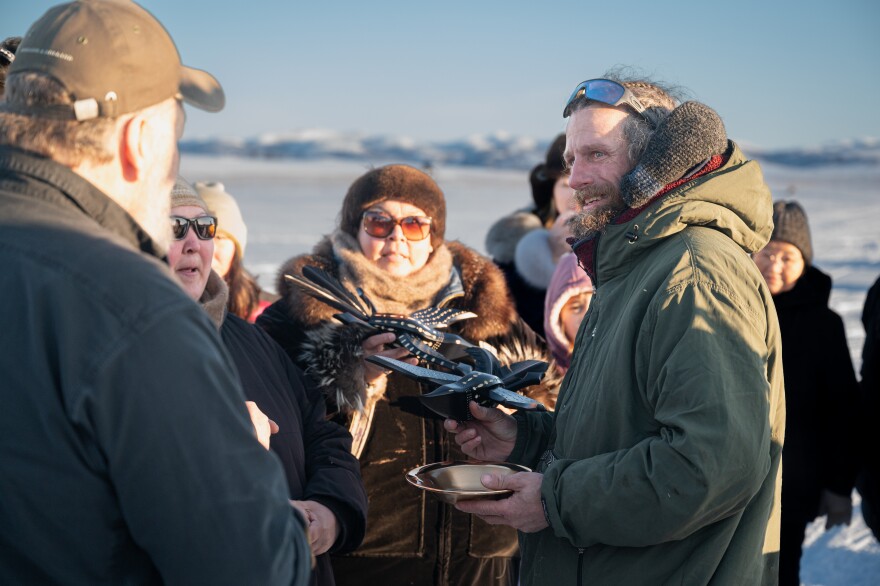Musher Jessie Holmes raced out of White Mountain around 5 p.m. Thursday, poised to win his first Iditarod Trail Sled Dog Race.
He and his 10 dogs had just 77 miles to go to Nome, and about a three-hour lead over their closest competitor, Matt Hall. They were also fresh off a long rest. All teams must take an eight-hour layover in White Mountain.
During his stop, Holmes told Iditarod Insider that his team had seemed mentally down going into the prior checkpoint, in Elim, but after a four-hour rest, they were ready to run.
“I just started stopping, petting everybody, singing for them, cheering for them, snacking ‘em,” he said while doing chores.
Holmes received a $2,500 check and a special trophy for being the first musher to White Mountain.
This is his eighth Iditarod. He has previously placed as high as third. He’s originally from Alabama and has starred on the reality TV show, “Life Below Zero.” He works as a carpenter, according to his racer bio, and was Rookie of the Year in 2018.

Holmes, Hall and Paige Drobny have leapfrogged each other for first place for much of the race.
All three live in Interior Alaska and all three have never won an Iditarod before, but they’ve been close. Hall was last year’s runner-up. Drobny has placed as high as fifth.
On Thursday, Hall arrived in White Mountain at 11:53 a.m. with 10 dogs. He can leave as early as 7:53 p.m. While resting in the checkpoint, he told the Insider that he felt calm going into the final leg of the race. He said he stopped trying to chase Holmes out of Elim, and he wasn’t worried about Drobny catching up.
“It’s really, really nice to have a buffer. Both sides. I have zero stress, I’m just running dogs, which is what I know how to do. I’m not catching him, she’s not catching me,” Hall said smiling.

Drobny checked into White Mountain Tuesday at 2:46 p.m. with 12 dogs. She can leave as early as 10:46 p.m.
It could take mushers anywhere from nine to 12 hours to reach the finish line from White Mountain, according to previous race times.
This year’s mushers are racing on the longest Iditarod trail ever, after a reroute due to scarce snow in Southcentral Alaska. The race started in Fairbanks last Monday.
There are just 23 teams total still on the trail. That’s after eight dropped out over the past week and a half, including one musher because his dog died. Two rookies, Sydnie Bahl and Quince Mountain, were recently withdrawn because officials said they were going too slow.
With the added miles and tough trail conditions, this Iditarod is running longer than usual. A winner has usually been crowned by now. The amount of time this year’s winner will spend on the trail will likely be the longest in at least two decades.


